From rare, exotic breeds to those with unique and striking features, the most expensive cat breeds may cost you a few bucks—but the kitty love will be worth it
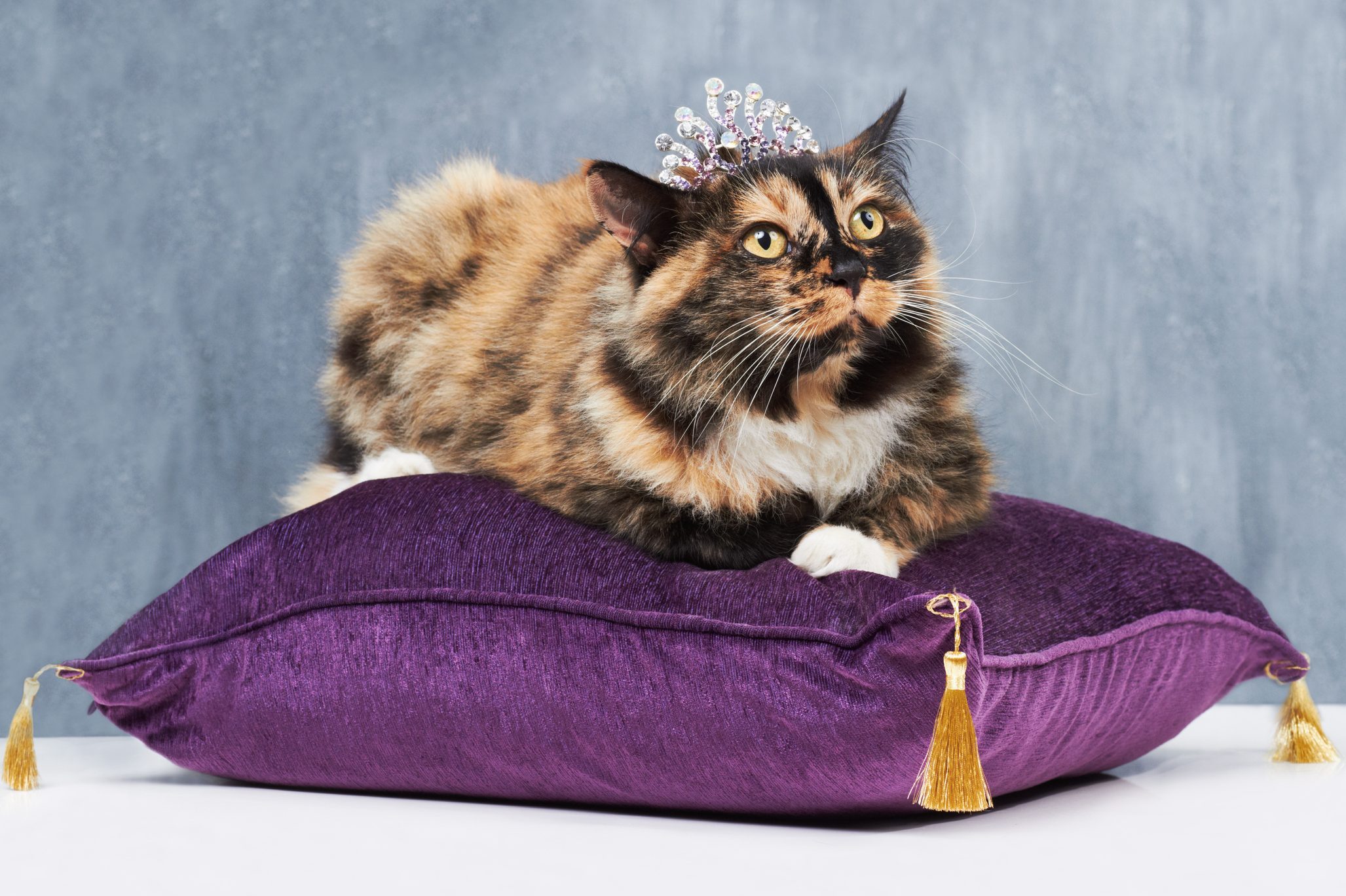
12 of the Most Expensive Cat Breeds Money Can Buy


12. Maine Coon
Average cost: $1,000–$2,000
Maine Coon cats have been on the CFA’s top breed list for years—they ranked No. 1 for 2024—and it’s easy to see why. Though Maine Coons are one of the largest cat breeds, they’re widely considered to be one of the friendliest.
“We nicknamed them the gentle giants, and they are,” Keiger says. “They are sweet, they’re loving and they truly have no idea how big they are. They want to climb in your lap.” Maine Coons are especially good around kids and other family pets, and owners often say the cats have a lot in common with their canine housemates.
“They’ll play fetch,” Keiger says, noting that they’ve also been known to follow people around like a dog. “I lived with a Maine Coon for about 15 years, and he would sit by my side on the sofa every night, throw his head back, look at me and start purring.”
These sturdy kitties were built to withstand the snowy winters of New England, and it shows. They have large paws that function as snow shoes and luxurious, thick coats that protect them from the cold.
While Maine Coon cats are generally very hardy, they can be prone to some genetically linked health issues like hip dysplasia and hypertrophic cardiomyopathy. Make sure your breeder screens for these and other conditions. And because Maine coon cats have thick coats, your new friend will need regular grooming to stay his handsome best.
| Breed overview | Maine Coon |
| Height | 10–16 inches |
| Weight | 10–25 pounds |
| Life expectancy | 9–15 years |
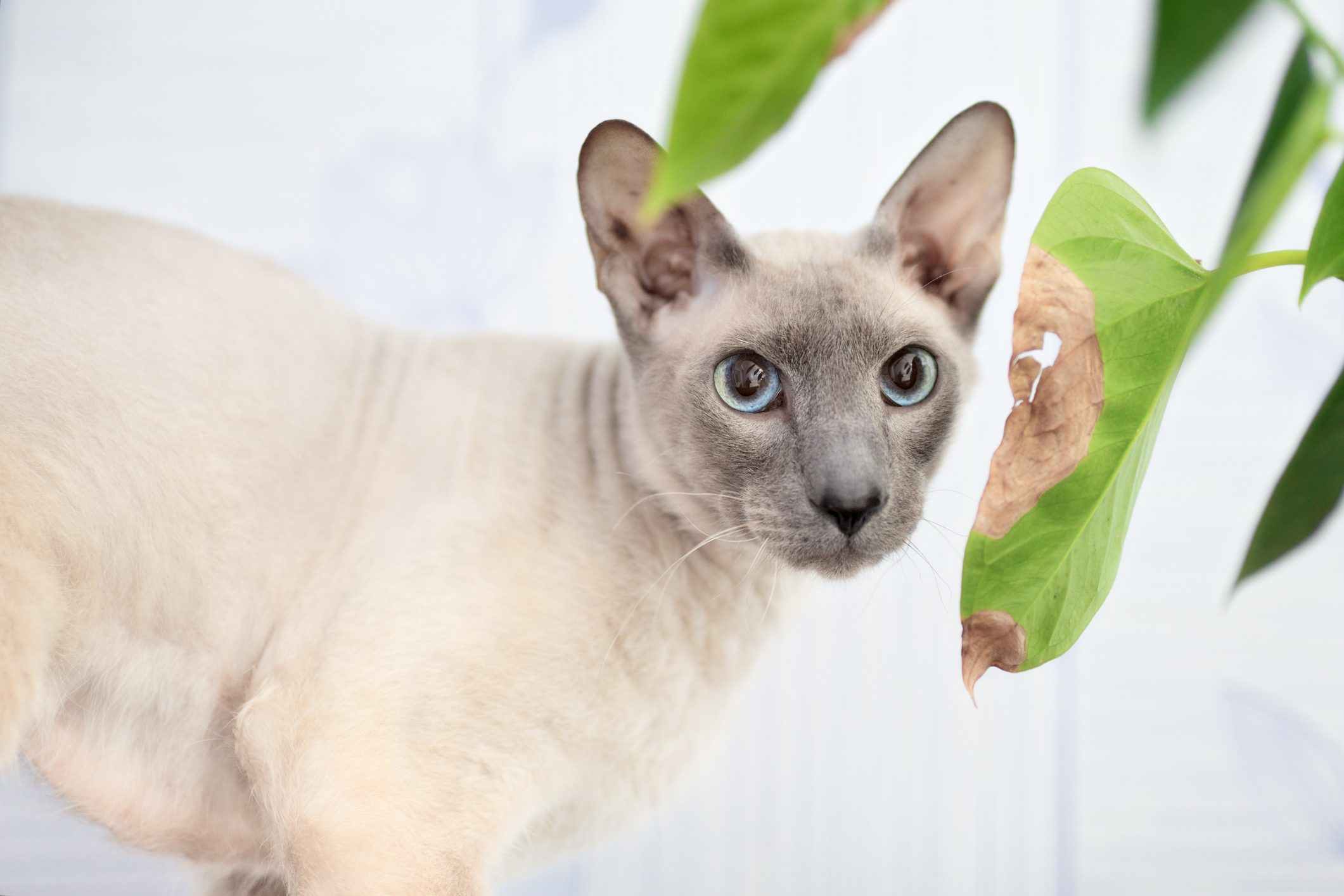
11. Peterbald
Average cost: $1,000–$2,600
These exotic-looking felines are a type of hairless cat breed, though not all Peterbalds are completely bald. Some are hairless, some are covered in a kind of peach fuzz and still others have a wiry brush coat.
“It’s similar to the Sphynx, but different,” says Keiger, explaining that unlike the stockier, hairless Sphynx, the Peterbald has a triangular-shaped head and an elongated body similar to the Oriental Shorthair or Siamese.
The Peterbald has only been around since 1994, when a Russian breeder crossed a hairless cat breed called a Donskoy (or Don Sphynx) with an Oriental Shorthair. Their relative newness on the cat-breeding scene is one of the reasons the Peterbald makes the list of the most expensive cat breeds: It’s costly for a cattery to breed a new and unique variety. A healthy top-notch stud and queen are expensive, and some breeders must import the breed.
Still, those who know the Peterbald love their social natures and chatty personalities. Just don’t assume their hairlessness means they are a hypoallergenic cat. If you have cat allergies, you may still react to their saliva or dander.
| Breed overview | Peterbald |
| Height | 8–12 inches |
| Weight | 6–12 pounds |
| Life expectancy | 10–13 years |
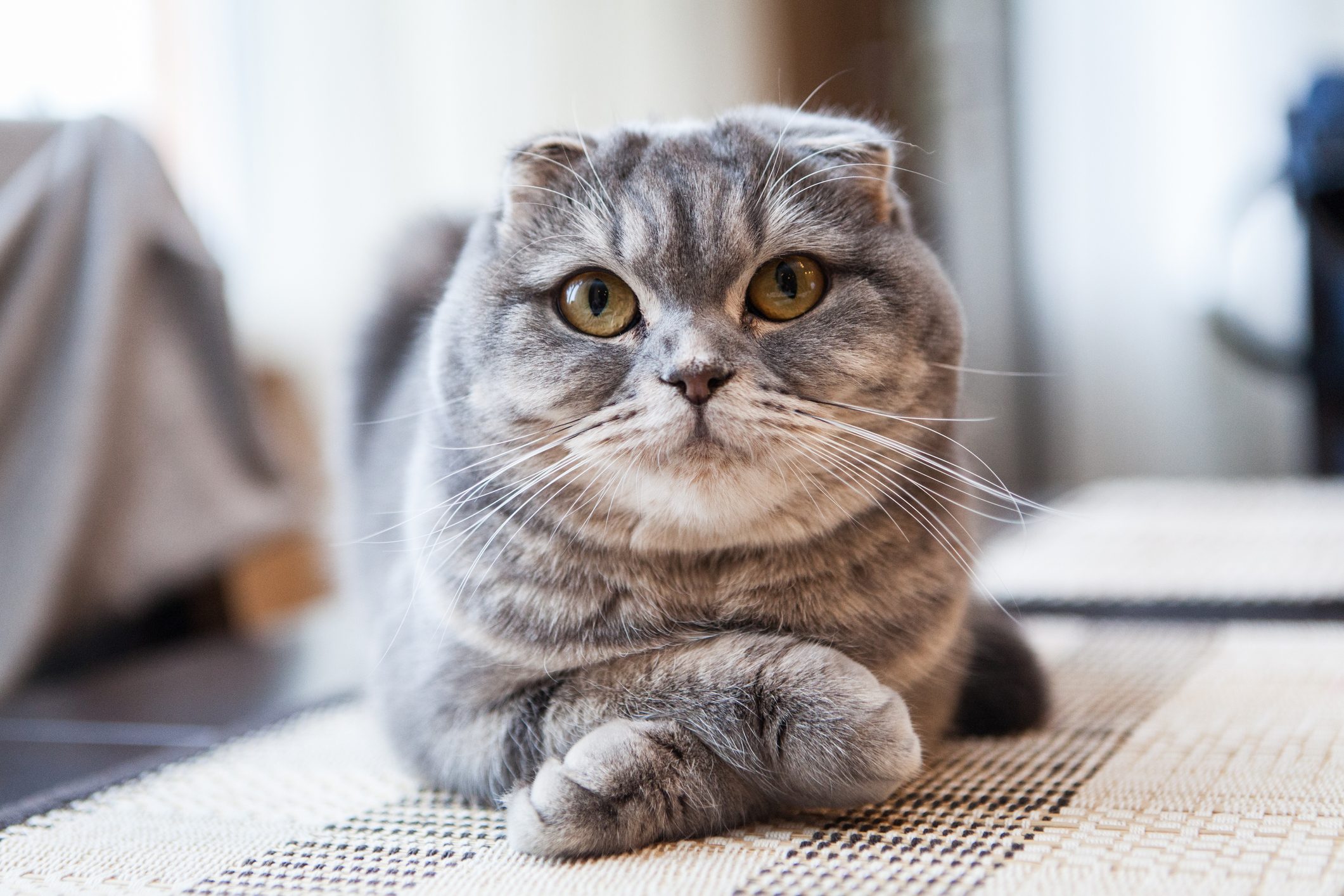
10. Scottish Fold
Average cost: $1,500–$2,500
If you’re looking for a cute, snuggly and fluffy cat breed whose one true love is you, the Scottish Fold wants your number.
“They’re incredibly affectionate,” Keiger says. “They’re very sweet, playful and easygoing, and [are] just good cats to live with.” They are also strikingly good-looking. With their round heads, flat ears and enormous round eyes, Scottish folds can stop you in your tracks, says Keiger: “The first time I saw one I literally stopped and said ‘Oh my God, it’s an owl!'”
Folded ears are the breed’s defining feature, but interestingly, all Scottish Fold kittens are born with pointed, not folded, ears. After about 21 days, the ears fold downward in about half of them. For health reasons, it’s important to never breed two cats with folded ears together. “You always breed folded ear to straight ear,” Keiger says. “So, you have about a 50-50 chance of the ears folding down.”
This selection process drives up the price—as does the fact that the breed is riding a popularity wave at the moment. (Taylor Swift has two Scottish folds, in addition to a Ragdoll, that are regularly featured in her social media.)
One thing to note: Scottish Folds’ folded ears happen due to osteochondrodysplasia, a condition that causes a cartilage abnormality. As the cat ages, it can cause pain in other body parts, so make sure to consult a vet if you notice any arthritis or stiffness in your Scottish Fold.
| Breed overview | Scottish Fold |
| Height | 8–10 inches |
| Weight | 9–13 pounds |
| Life expectancy | 11–14 years |
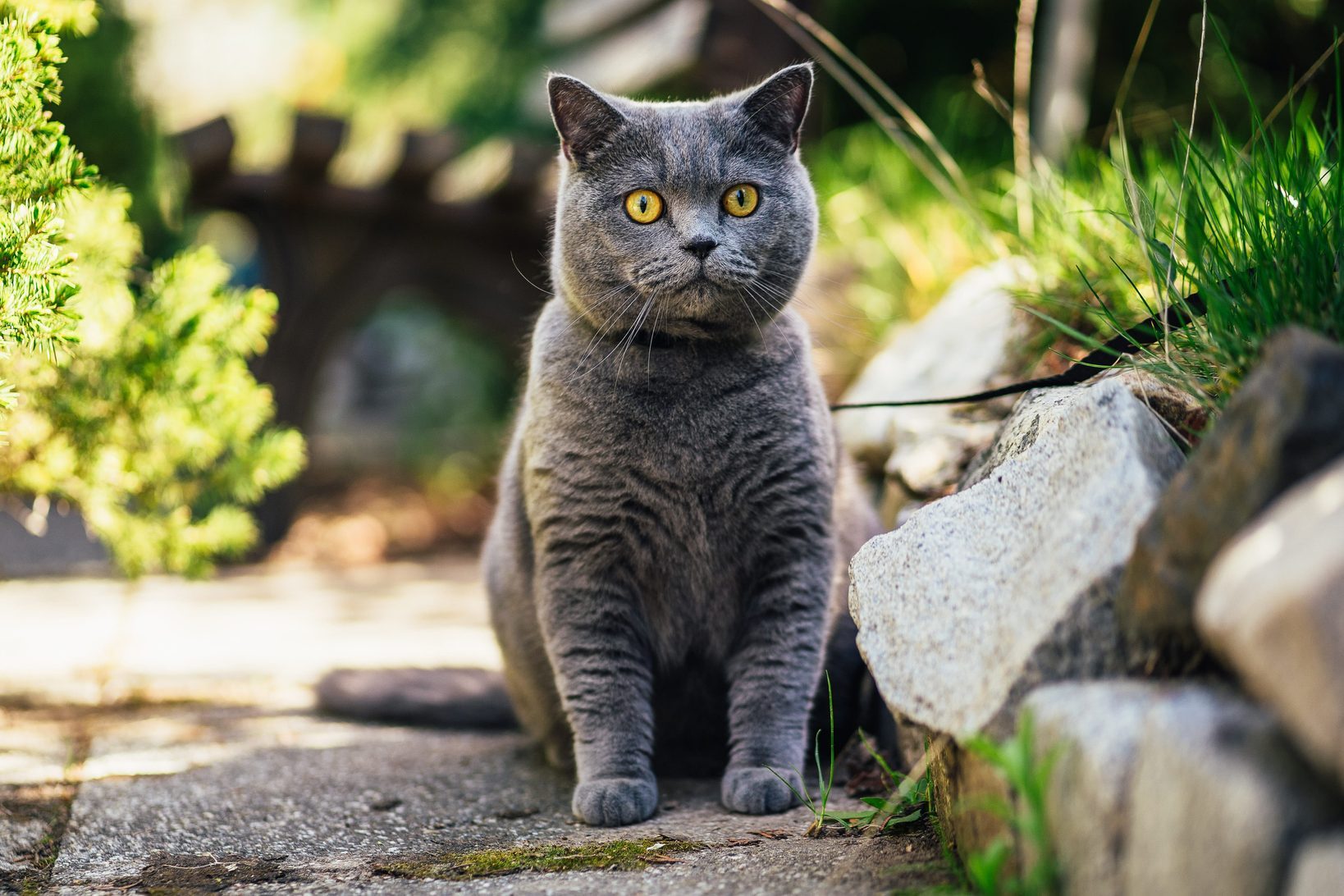
9. British Shorthair
Average cost: $1,500–$3,000
Just one look and you can see why these super cute and wildly popular Brits made this list of the most expensive cat breeds.
“A lot of people say they look like big plush teddy bears,” Keiger says. “They have the densest coat of any of our breeds—300 hairs per square inch—so you can put your hands in it, then release, and you don’t see where your hands have been.” The expert likens the British Shorthair to a “fine Oriental rug that you can walk across and not leave a footprint.”
The large-boned breed also boasts big round eyes, round heads and jowls that suggest a mischievous smile. In fact, the breed inspired illustrator John Tenniel’s rendition of the Cheshire Cat from Alice in Wonderland. They’re not lap cats—they prefer to snuggle next to you—but they do love their people, and they are easily trainable.
British Shorthairs come in a variety of colors, but it’s the smoky blue ones with copper-colored eyes that are the most coveted (and pricey). But hey, if you need to justify the cost, know that you will probably save money on vet bills with this breed. British Shorthairs are known for their clean bill of health—though they are prone to obesity if they get their paws in the treat jar too often.
| Breed overview | British Shorthair |
| Height | 12–14 inches |
| Weight | 7–17 pounds |
| Life expectancy | 15–20 years |

8. Ragdoll
Average cost: $1,500–$3,000
Big and ultra-fluffy, with piercing blue eyes, it’s no shocker Ragdolls are so popular—and pricey. But they are more than just a pretty face. These calm, easygoing and sweet-natured cats are exceptionally social, making them a good fit for bustling homes.
“They’re very mellow and laidback, and they enjoy being with people,” Keiger says.
Ragdolls are big cats—easily 18 pounds, according to Keiger—and they are a cat breed that gets along well with dogs. If you have a house full of pets, there shouldn’t be too much hissing and clawing between roomies. And while some cats are standoffish, these lovable furballs are happiest with you, following you around, rubbing up against you, sleeping with you and greeting you at the door.
In return for their devotion, make sure to keep an eye on their health, as Ragdolls can be prone to weight issues and urinary and heart problems.
| Breed overview | Ragdoll |
| Height | 9–11 inches |
| Weight | 8–18 pounds |
| Life expectancy | 12–15 years |
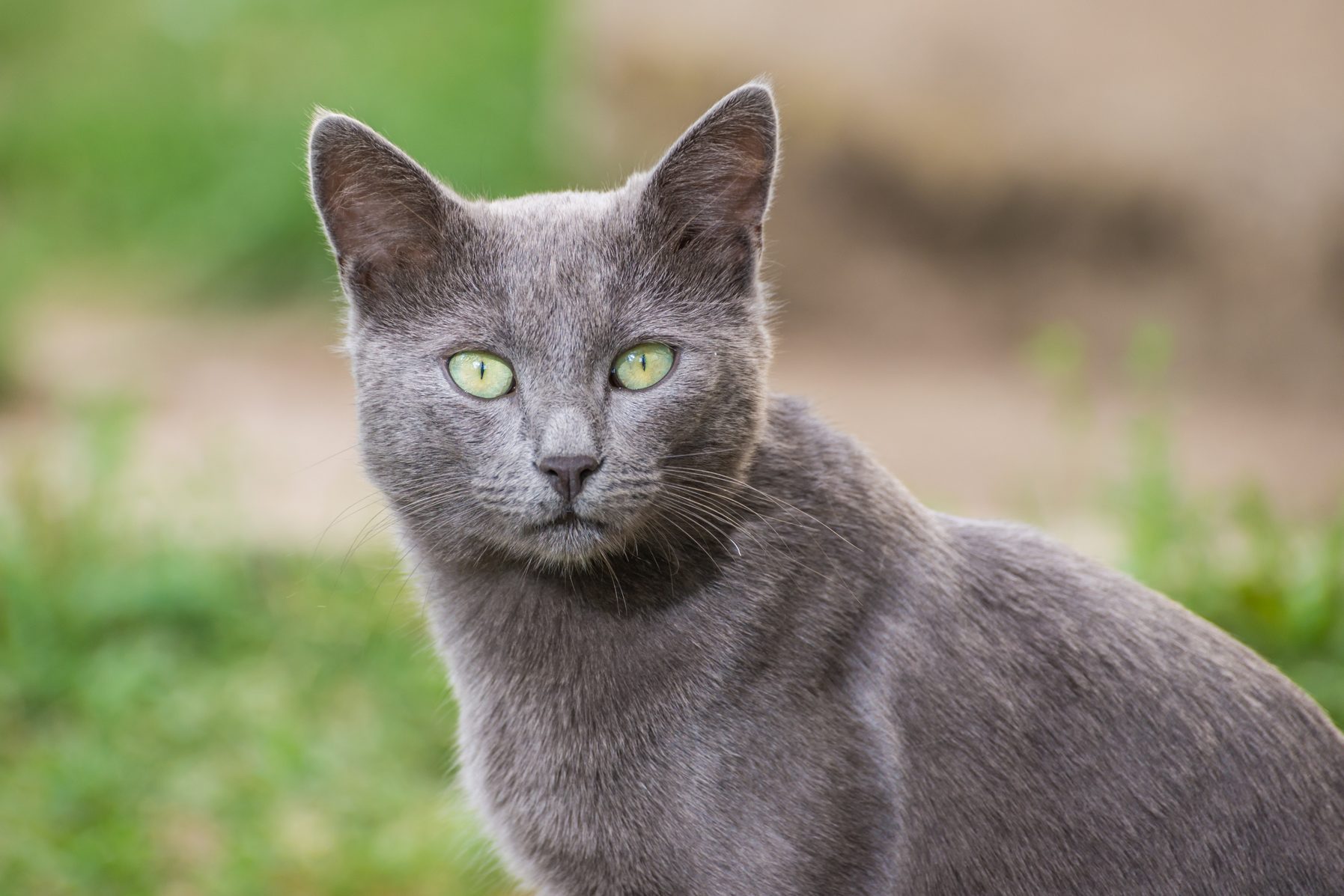
7. Russian Blue
Average cost: $1,500–$3,000
Sometimes the most expensive cat breeds want to know your worth.
“Russian Blues are wary around strangers, so they have to check you out first,” Keiger says. “But once they decide you are okay, they’re very loyal.” And these gorgeous cats are “unrepentant lap seekers,” Keiger adds. “If you’re sitting down and there’s a lap, they will be on it.”
Although they are called “blue” by cat fanciers, Russian Blues actually come in various shades of light bluish gray, from silver to a deep slate. Whatever their shade, their guard hairs (aka outer coat) are tipped in silver, giving them a distinctive shimmery appearance. “When they move, it looks like they’re glowing and glimmering [due to] the way that velvet catches the light,” Keiger says. “It’s one reason they are often called elegant.”
But Russian Blues aren’t just popular and pricey for their beauty. They are also highly intelligent and particularly fastidious about their litter box. You may want to consider a self-cleaning litter box, because they may find a more hygienic place to do their business if you don’t keep the designated one clean.
| Breed overview | Russian Blue |
| Height | 8–10 inches |
| Weight | 8–15 pounds |
| Life expectancy | 15–20 years |
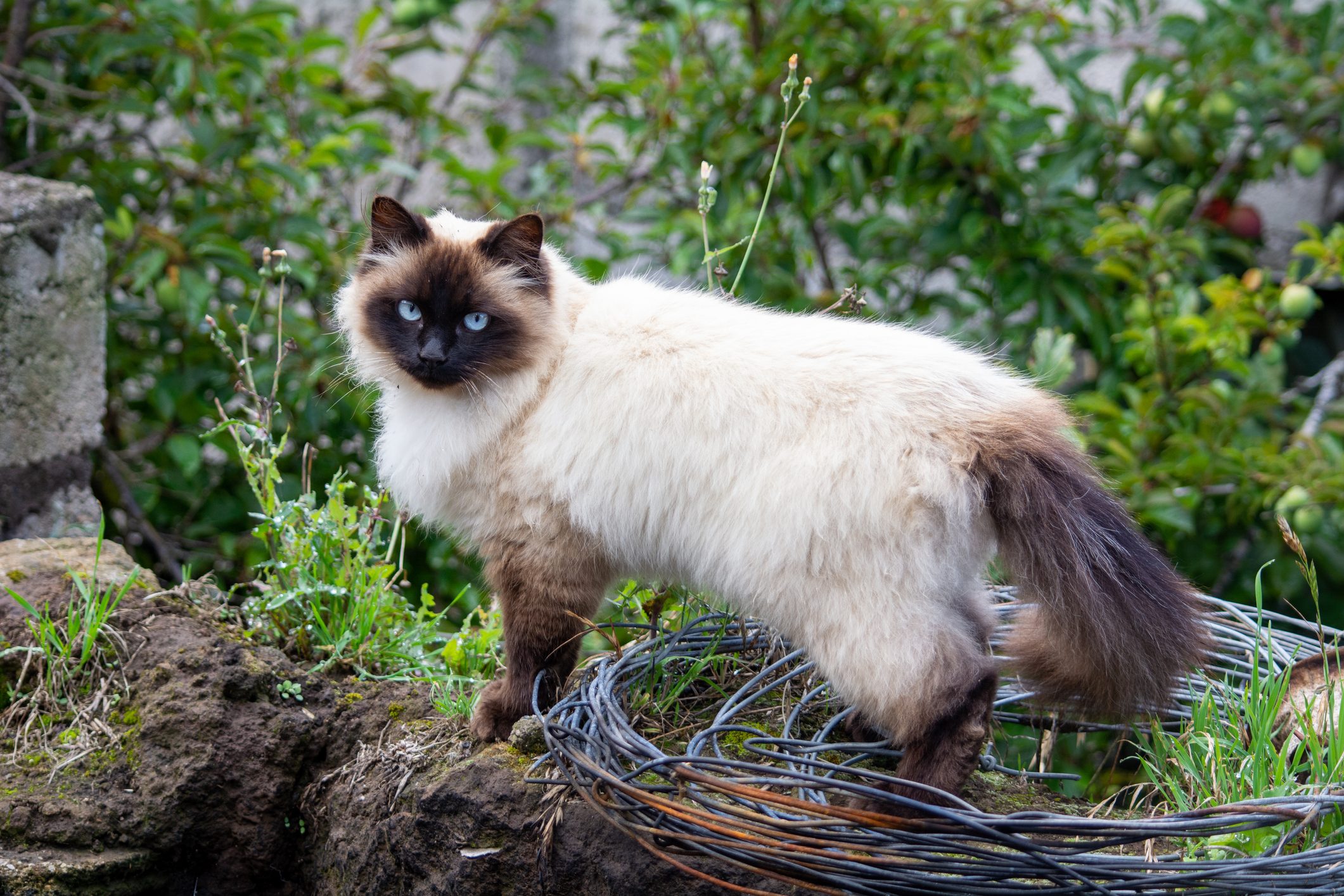
6. Himalayan
Average cost: $2,800–$3,500
What do you get when you cross a gorgeous Persian with a striking Siamese? A super adorable Himalayan! This hybrid breed was created in the 1930s to achieve the Persian’s long hair with the color points of the Siamese. (“Points” are areas of different coloration, such as the ears, face and tail of cats.)
“And with the pointed patterns you always get those gorgeous blue eyes,” Keiger says. “They’re very beautiful cats.”
Himalayans are the perfect combo of gentle temperament and a luxurious coat. “They are very sweet-natured and loving,” Keiger says. “Their personality is virtually identical to the Persian.” (If you’re wondering if the Himalayan picked up the demanding vocal habits of the Siamese, it did not.)
Most Himalayans would happily opt for snuggling with their favorite human over a vigorous play session. But while you don’t have to be concerned with meeting high exercise expectations, be prepared to do a lot of heavy lifting in the grooming department. Daily grooming is a must, as is a monthly bath. If you’re in the market for a Himalayan, start perfecting your cat-bathing skills now to keep the oils and dirt from building up in their fur.
| Breed overview | Himalayan |
| Height | 10–12 inches |
| Weight | 7–12 pounds |
| Life expectancy | 9–15 years |
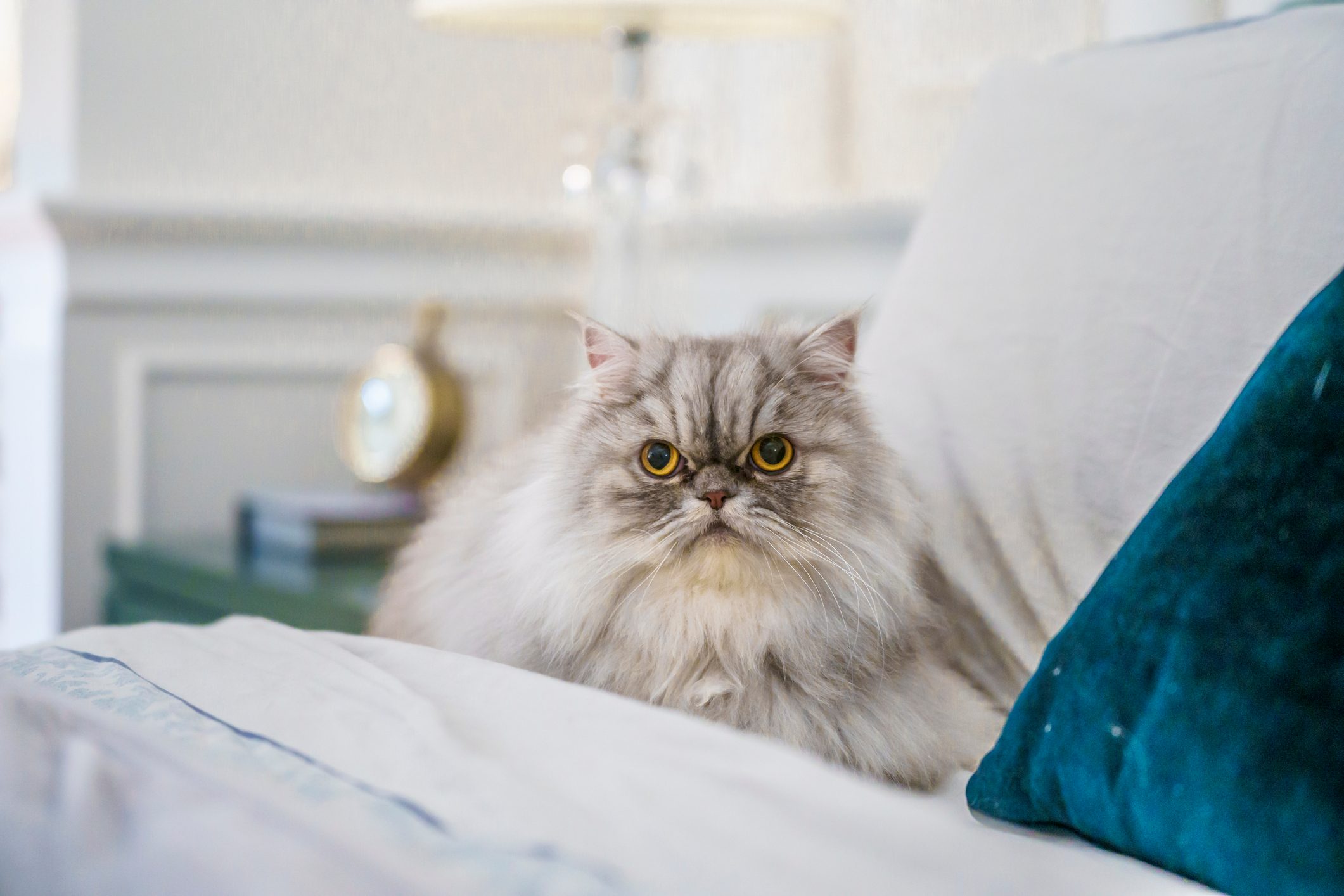
5. Persian
Average cost: $1,300–$5,000
As one of the oldest cat breeds, believed to be from Persia (now Iran), glamorous Persians are just as popular today as they were when they graced Queen Victoria’s lap.
“They’re renowned for their beauty,” says Keiger. “When people think of a longhaired cat, they usually think of the Persian.”
Persians are prized for their luxurious coats and big round eyes, and their personalities are just as appealing. Gentle and sweet-natured, they generally prefer to live with adults in a quiet household. Some cats aren’t fond of being picked up, but the Persian relishes a snuggle session. “They will come nuzzle your face to wake you up and cuddle,” says Keiger.
Like other breeds with flat faces, some Persians have been prone to respiratory issues and an eye condition known as cherry eye, so make sure to select a reputable breeder who performs all necessary health screenings. And about that luxe coat: It can mat if left uncombed, so be ready for daily grooming sessions.
| Breed overview | Persian |
| Height | 8–10 inches |
| Weight | 7–12 pounds |
| Life expectancy | 10–18 years |
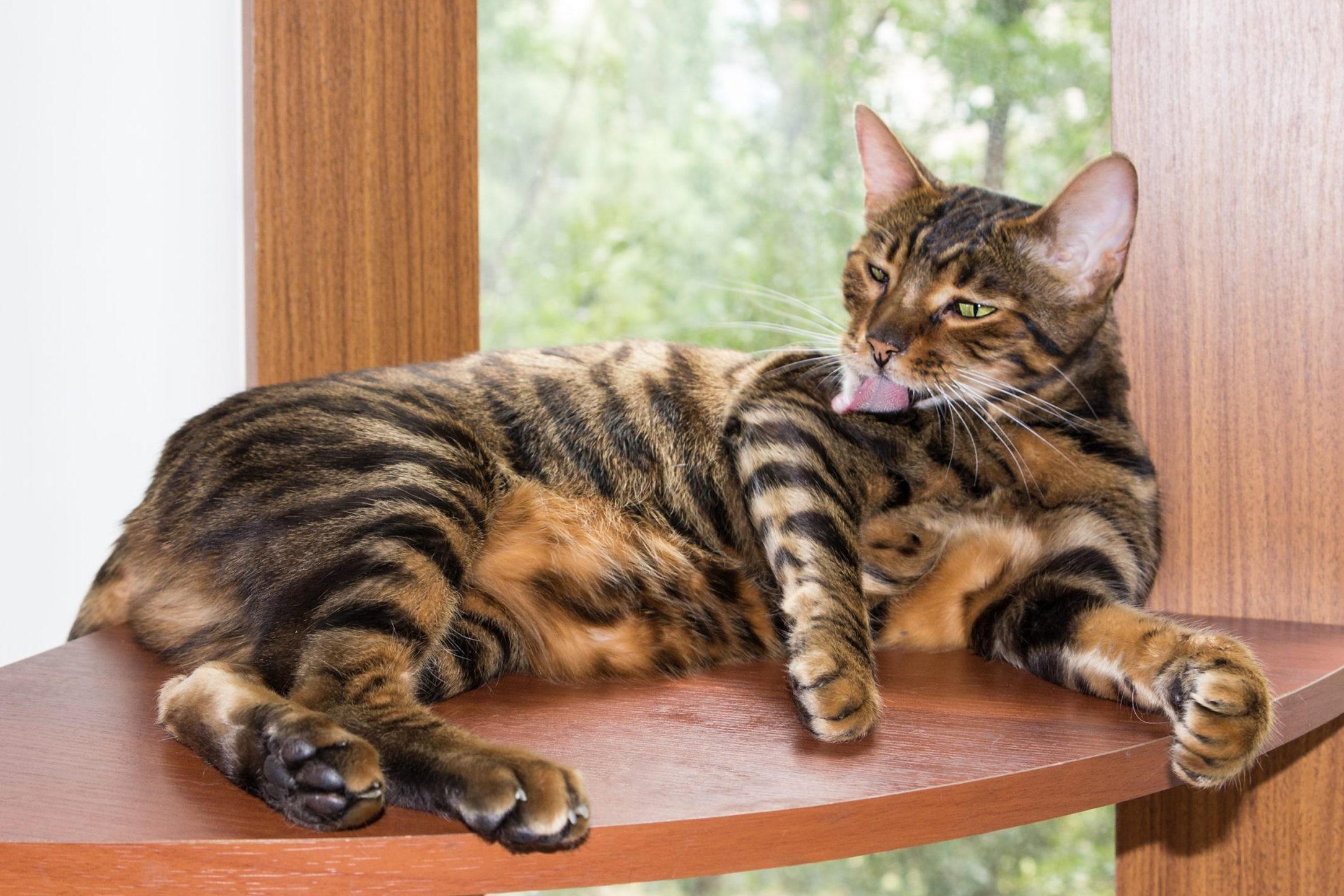
4. Toyger
Average cost: $1,500–$5,000
For cat parents who want their own frisky mini-tiger to play with, the Toyger could be the purr-fect match. Toygers are bred to have the vivid striped coat patterns of actual tigers—without a single drop of real tiger blood. Their genes come from mixing a Bengal cat with a striped domestic shorthair.
A relatively new breed, the Toyger is not yet recognized by the CFA, though it definitely belongs on the list of rare and expensive cats—as you can see from their price tag. The International Cat Association has included them among championship breeds since 2007.
Toygers are known for being smart and curious, so learning new tricks, solving interactive kitty puzzles and playing with cat toys is essential mental stimulation for them. And even though they have a wild tiger vibe, Toygers enjoy cuddling and affection. But they might not tolerate a child’s overly enthusiastic cuddles, so a home with kids (and adults) who respect the Toyger’s personal boundaries is best.
| Breed overview | Toyger |
| Height | 9–13 inches |
| Weight | 10–15 pounds |
| Life expectancy | 10–15 years |
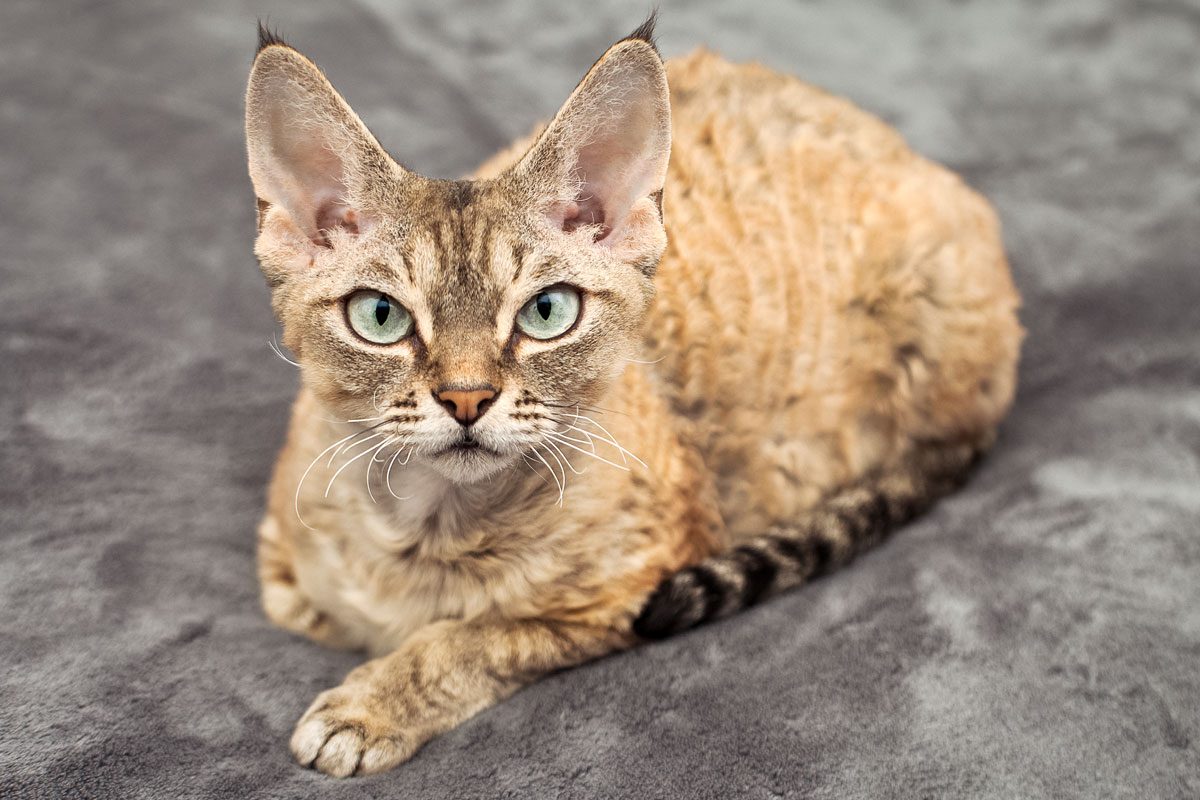
3. Devon Rex
Average cost: $2,500-$5,000
Sometimes called the pixies of the cat world, the diminutive Devon Rex is all kinds of adorable.
“They look a little like aliens,” says Keiger. “When I’m judging a Devon Rex, I always have to remind myself not to get caught up in the cuteness.”
That’s no easy feat, given the cats’ elfin appearance. Devons have big eyes, large, stand-up ears and a soft, curly coat you’ll be hard-pressed not to run your fingers through. Even better, that impish appearance comes packaged with an equally impish personality. The breed is known for being smart, mischievous and extremely people-oriented. “They’ll want to be with you all the time,” says Keiger. “In fact, they kind of insist on it.”
With a history that traces back to a curly-haired tomcat in Devon, England, in 1960, the Devon Rex breed has boomed in popularity in recent years. That’s helped drive up their price tag, as you can see from their high spot on this list of the most expensive cat breeds. If you get a Devon Rex, know that they are very active cats—so make sure to supply them with plenty of toys and attention.
| Breed overview | Devon Rex |
| Height | 10–12 inches |
| Weight | 7-9 pounds |
| Life expectancy | 14–17+ years |

2. Sphynx
Average cost: $2,000–$5,000
The Sphynx looks like it belongs in an ancient Egyptian tomb, but this breed hails from Toronto, Canada. Their story began in 1966, when a domestic cat gave birth to a hairless kitten, courtesy of a natural genetic mutation. Years of selective breeding followed, and the Sphynx was recognized by the CFA in 1998.
“At first, people think they’re weird because they don’t have any hair, but they’re really very cute and sweet,” says Keiger. “When you hold one, it’s like holding a soft, suede hot water bottle.”
Unlike its (also hairless) cousin the Peterbald, which has an elongated Siamese-like body, the Sphynx is less angular. It has a round face with big ears and a noticeably wrinkly appearance. Because the Sphynx comes from a recessive gene, not all kittens in a litter will be born hairless, which makes the furless kitties all the more prized.
It can get a little chilly for these fur-free extroverts, so cuddling and sleeping under the covers is the norm. (Luckily, “they’re very people-oriented,” Keiger says.) And while Sphynx cats obviously don’t need to be brushed, they do need baths every few months to remove oil buildup on their skin.
| Breed overview | Sphynx |
| Height | 8–10 inches |
| Weight | 9–13 pounds |
| Life expectancy | 11–14 years |
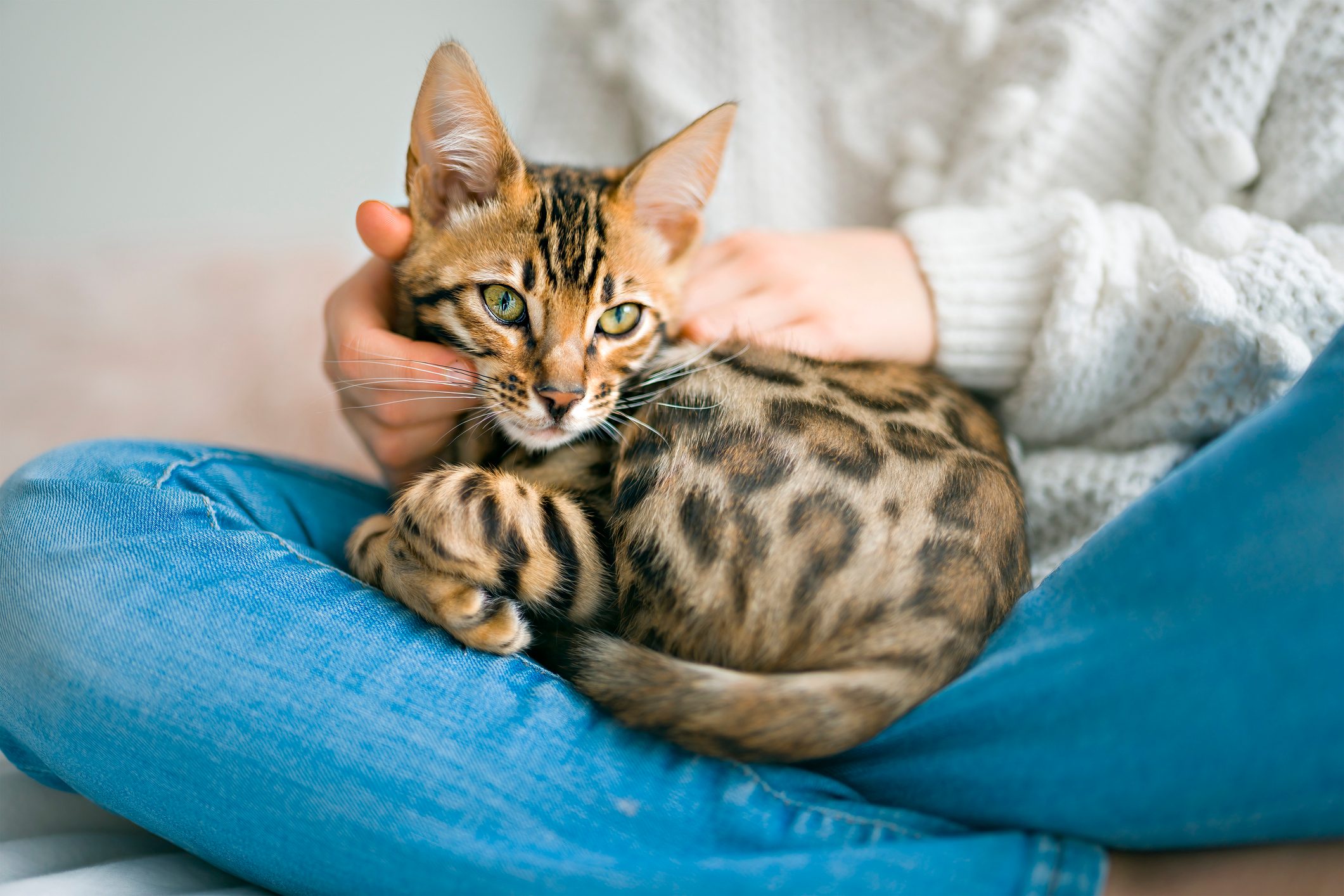
1. Bengal
Average cost: $2,500–$6,000
Is one of the most expensive cat breeds masquerading as a baby leopard? It sure looks like it. Bengals are the only domestic cat breed that have distinctive rosettes like the markings on leopards, jaguars and ocelots. And their coats actually feel like a wild animal’s.
“Oh my goodness, the coat,” Keiger says. “It’s silky, dense and close-lying. There’s nothing like it. It feels like a pelt.”
How did this stunning feline come to be? In the mid-1960s, a domestic cat was bred with a species called the Asian Leopard cat. Today’s Bengals have no actual wild blood—CFA rules require that its cats be at least five generations removed from an actual wildcat—but they are still very high-energy. “Bengals are very sweet and very active,” says Keiger.
Bengals aren’t lap-sitters or lazy loungers, at least not until after they’ve tired themselves out. “They need daily exercise,” Keiger says, so make sure you provide them with plenty of cat toys and interactive play sessions.
“Those big exercise wheels are great for Bengals,” says Keiger. “They’ll just run and run.”
| Breed overview | Bengal |
| Height | 8–10 inches |
| Weight | 8–15 pounds |
| Life expectancy | 9–15 years |
What makes a cat so expensive?
There are many factors that play into why some cat breeds are more expensive than others, Keiger says, but a few things stand out.
- Demand: The more people clamor for a particular breed of cat, the more breeders are needed to supply them. “Mainly it’s a matter of breed popularity and how many breeders there are to meet that demand,” says Keiger.
- Bloodline: Even within breeds, there can be a wide variance in price. Kittens from a champion bloodline will be more expensive, as will those with more rare coat and eye colors. “There’s a lot that goes into it,” according to Keiger.
- Breed standards: How well does a kitten exemplify the breed? “Show-quality” cats meet strict breed standards for conformity and appearance, making them suitable for show and potential breeding, while “pet-quality” cats may have minor variations from the standard, like a shorter tail or wider muzzle.
Cats that don’t meet the strict standards of the FCA and other cat organizations still make wonderful companion animals, even if you won’t be seeing them in the cat show ring anytime soon. Before adopting expensive cats and luxury cat breeds, consider your ability to care for them, and whether the high price tag is as important as giving a cat a loving home.
About the expert
|
Why trust us
At Reader’s Digest, we’re committed to producing high-quality content by writers with expertise and experience in their field in consultation with relevant, qualified experts. We rely on reputable primary sources, including government and professional organizations and academic institutions as well as our writers’ personal experiences where appropriate. We verify all facts and data, back them with credible sourcing and revisit them over time to ensure they remain accurate and up to date. Read more about our team, our contributors and our editorial policies.
Sources:
- Teresa Keiger, allbreed judge with the Cat Fanciers’ Association; interviewed, April 2025
- Carleton College: “Footnotes: The Cheshire Cat”
- The International Cat Association: “TICA Recognized Breeds”
- The Cat Fanciers’ Association: “CFA Recognized Breeds”


















